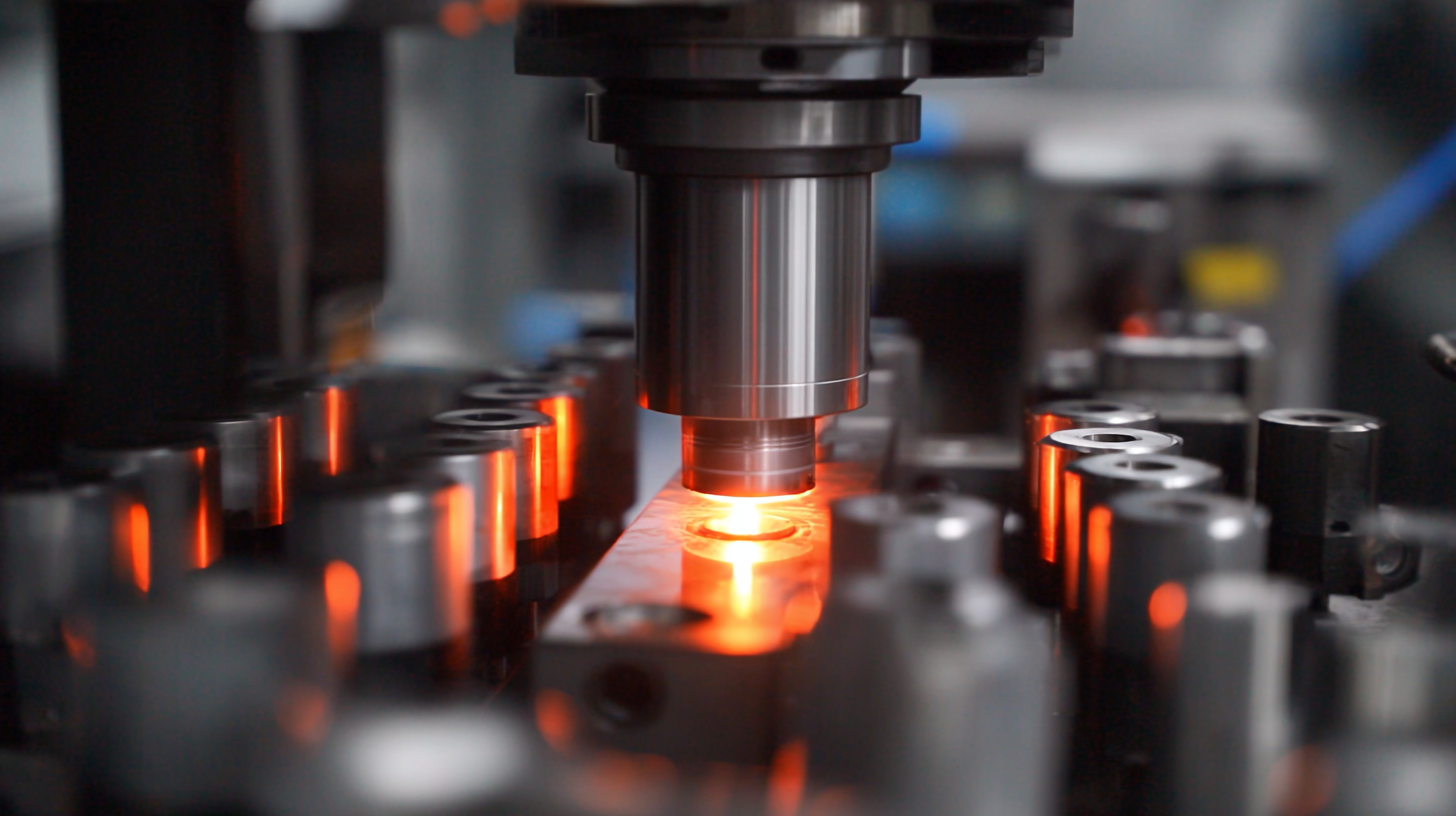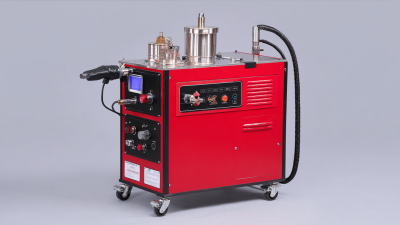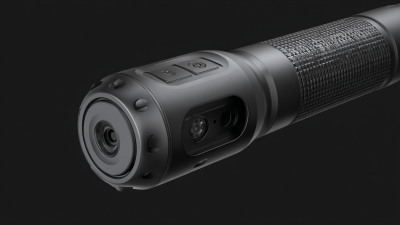Leave Your Message
In the rapidly evolving landscape of modern manufacturing, the Gray Ultrasonic Welder has emerged as a pivotal tool that enhances production efficiency and product quality. According to a report by MarketsandMarkets, the ultrasonic welding market is projected to reach $1.3 billion by 2025, highlighting the growing demand for advanced welding technologies. The Gray Ultrasonic Welder stands out due to its precision, speed, and versatility, making it suitable for a variety of materials including plastics, metals, and composites. By utilizing high-frequency ultrasonic vibrations, it minimizes thermal impact, ensuring the integrity of heat-sensitive components. Furthermore, the adoption of ultrasonics is associated with reduced cycle times, often cutting production time by up to 50%, as reported by the International Journal of Advanced Manufacturing Technology. As industries strive for sustainability and cost-effectiveness, the Gray Ultrasonic Welder not only delivers superior weld quality but also aligns with the shift toward environmentally friendly manufacturing processes.

In modern manufacturing, the use of gray ultrasonic welders offers significant benefits, particularly in high-volume production settings. These advanced machines are designed to enhance efficiency and productivity, allowing manufacturers to meet the increasing demands of the marketplace. By utilizing high-frequency sound waves to create strong, reliable bonds between materials, gray ultrasonic welders streamline the assembly process, reducing the time required to complete each task.
Moreover, gray ultrasonic welders contribute to cost savings in high-volume operations. The precision of ultrasonic welding minimizes material waste and lowers the need for additional adhesives or fasteners, which can be costly and labor-intensive to apply. This technology not only improves the quality of the final product by ensuring uniformity in weld strength but also increases throughput, enabling companies to scale their operations without compromising on quality. Ultimately, the integration of gray ultrasonic welders marks a significant advancement for manufacturers looking to enhance their production capabilities and maintain a competitive edge in the industry.
Gray ultrasonic welders are revolutionizing modern manufacturing with their advanced features designed to enhance performance and efficiency. One key feature is the frequency modulation technology, which allows for precise control over the welding process. According to a report by the International Society of Automation, manufacturers utilizing such technology have reported up to a 25% reduction in processing time. This increased efficiency not only boosts productivity but also minimizes energy consumption, making these welders an eco-friendly choice.
Moreover, Gray ultrasonic welders are equipped with intelligent monitoring systems that provide real-time feedback on weld quality and equipment performance. A study conducted by the American Welding Society highlights that systems with integrated monitoring can lead to a 30% decrease in defective welds, thereby reducing waste and ensuring consistent product quality. This capability is crucial in industries such as automotive and electronics, where precision and reliability are paramount. By investing in Gray ultrasonic welding technology, manufacturers are not only enhancing their operational efficiency but also improving their overall product integrity.
| Feature | Benefit | Impact on Manufacturing |
|---|---|---|
| Precision Control | Ensures accurate and consistent welds | Increases product quality and reduces defects |
| Energy Efficiency | Low power consumption during operation | Decreases operational costs |
| Versatility | Can weld a variety of materials | Expands range of products that can be manufactured |
| Compact Design | Space-saving equipment | Helps optimize shop floor layout |
| Low Noise Operation | Quieter than traditional welding methods | Enhances workplace comfort and safety |
When selecting the right Gray Ultrasonic Welder for your manufacturing needs, it's crucial to consider several key factors that can significantly impact production efficiency and product quality. According to a report by Smithers Pira, the ultrasonic welding market is expected to grow at a CAGR of 8% through 2025, driven by increasing demand for fast and reliable joining methods across various industries. A suitable Gray Ultrasonic Welder should ideally match the specific materials and thicknesses used in your operations, as different applications may require varying frequencies and power levels to achieve optimal weld strength.
Another significant aspect to consider is the machine's automation capability. Industrial automation has shown to increase productivity by approximately 30% according to a study by McKinsey, and integrating a Gray Ultrasonic Welder with automated systems can enhance workflow and consistency. Furthermore, examining the welder's component durability and maintenance requirements can lead to reduced downtime and lower operational costs in the long run. Thus, by carefully evaluating these aspects—application suitability and automation potential—manufacturers can make informed decisions that align with their operational goals and drive efficiency.
This chart showcases the various benefits of using a Gray Ultrasonic Welder in modern manufacturing. Each category represents a key advantage, with ratings out of 100, illustrating how gray ultrasonic welders can enhance manufacturing processes.
When integrating Gray ultrasonic welding technology into modern manufacturing, optimizing workflow is crucial for maximizing efficiency and output. One effective tip is to conduct thorough training for operators on the equipment's capabilities. Understanding the intricacies of the ultrasonic process can significantly reduce setup and adjustment times, allowing for quicker transitions between different production runs. Providing hands-on training sessions and continuous learning opportunities can empower workers to troubleshoot issues independently, minimizing downtime.

Furthermore, scheduling regular maintenance for the ultrasonic welding machines can prevent unexpected breakdowns, keeping the production line running smoothly. These proactive steps not only streamline the workflow but also enhance overall productivity in the manufacturing process.
Gray ultrasonic welders have become integral in modern manufacturing due to their precision and efficiency. However, to ensure their longevity and optimal performance, specific maintenance and care practices must be adhered to. Regular inspections of the actuator and stack are crucial, as they directly affect the welder's ability to generate ultrasonic vibrations. Experts recommend checking these components weekly and replacing any worn parts immediately. Furthermore, keeping the machine clean, particularly the sonotrode and tooling, minimizes build-up and potential operational failures.
In light of recent incidents in high-stakes environments, such as the fire caused by a welding mishap involving military submarines, the importance of proper maintenance becomes even clearer. Data from industry reports indicate that inadequate upkeep can lead to operational inefficiencies and safety hazards, emphasizing the need for a structured maintenance schedule. Manufacturers are advised to implement routine training for operators to recognize warning signs of wear and to facilitate timely maintenance. By prioritizing care for ultrasonic welders, companies not only extend their equipment's longevity but also enhance overall workplace safety and productivity.







